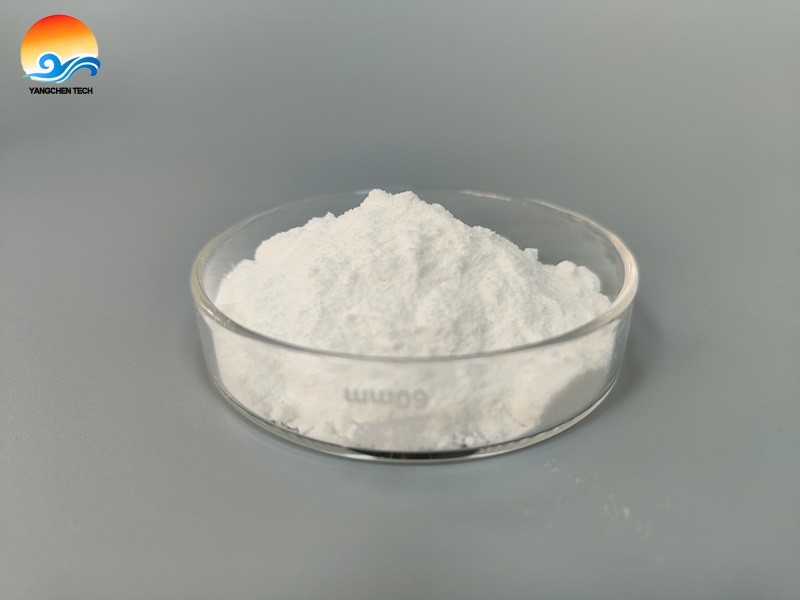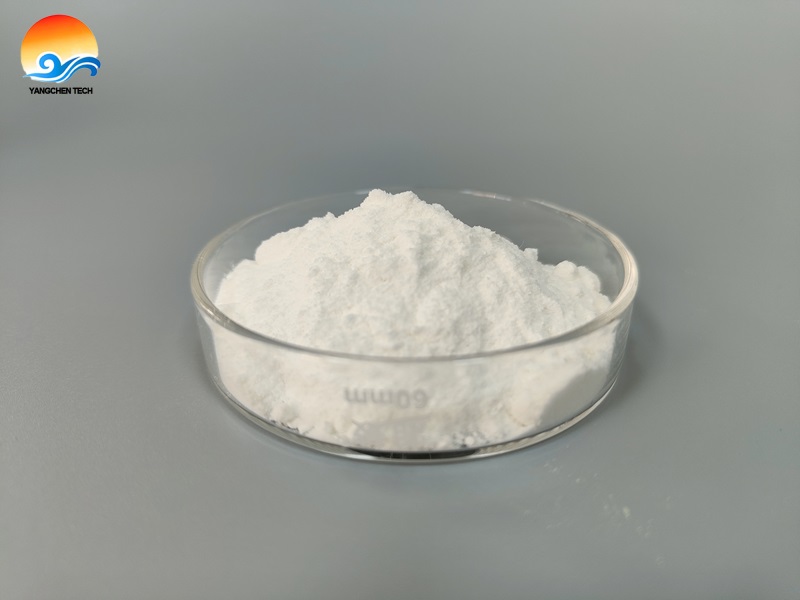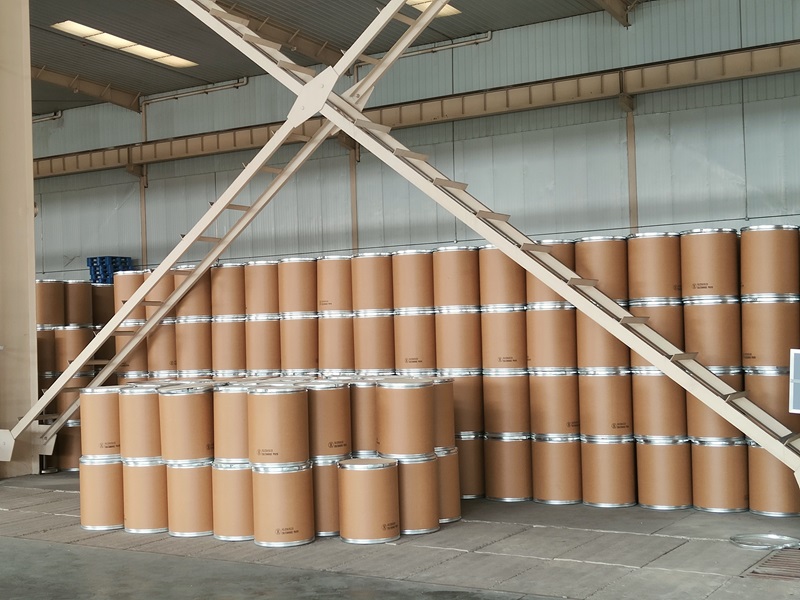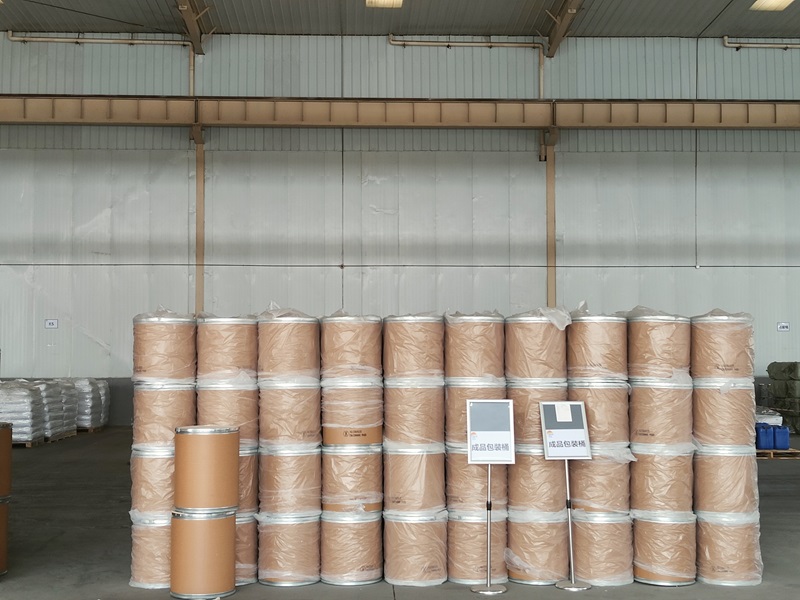PVA For woodworkers, Polyvinyl Alcohol for Woodworking opens up new possibilities. Its water-soluble nature allows for easy application and cleanup, while providing a strong bond between wood surfaces. Whether it's joining pieces of furniture, laminating wooden panels, or creating intricate woodcraft, PVA-based adhesives ensure a reliable and long-lasting bond. In the paper-making industry, the demand for efficient and high-quality adhesive solutions is crucial. Polyvinyl Alcohol Glue for Paper Making offers excellent performance characteristics, boosting both the efficiency and quality of the production process. When applied as a coating on paper, PVA adhesive ensures improved strength, dimensional stability, and printability. Additionally, it provides excellent resistance to moisture, heat, and chemicals, enhancing the overall durability of paper products.
How Does VAE Emulsion Compare to Other Lotions in Building Applications?
The Advantages of VAE Emulsion Over Traditional Binders
In the ever-evolving world of textile production, manufacturers are constantly seeking innovative solutions to enhance product quality and efficiency. Vinyl Acetate Ethylene (VAE VAE emulsion, also known as Vinyl Acetate Ethylene Copolymer Emulsion, offers a significant advantage over traditional binders by enhancing the quality and durability of textile products. The unique properties of VAE emulsion enable better adhesion, improved flexibility, and superior resistance to environmental factors such as moisture and heat. This results in textiles that maintain their shape, color, and structural integrity throughout their lifecycle.
VAE emulsion finds extensive use in the manufacturing of high-quality textile products. Its adhesive properties make it ideal for bonding various materials, including textiles, foams, and non-woven fabrics, without compromising softness or comfort. Whether it's for upholstery, automotive interiors, or apparel manufacturing, VAE emulsion provides excellent bonding strength and ensures impeccable product finish.
With increasing demands for faster production cycles, VAE emulsion offers notable advantages in terms of efficiency and cost-effectiveness. Its VAE Re-Dispersible Emulsion
In line with the growing focus on sustainability, VAE emulsion demonstrates its environmental responsibility. Being water-based, it offers a greener alternative to solvent-based binders, minimizing the release of volatile organic compounds (VOCs) into the environment. VAE emulsion is also free from hazardous substances, making it safe for both manufacturers and end-users.
The Benefits of Using Polyvinyl Alcohol in Packaging Solutions
Polyvinyl alcohol (PVA), also known as PVOH, is a versatile polymer that is widely tested in various industries. In the field of packaging, PVA is popular for its unique properties and advantages. Main uses in the packaging industry include PVA packaging film Polyvinyl Alcohol Adhesive, derived from PVA, offers exceptional bonding strength and adhesion properties. This makes it an ideal choice for packaging applications that require secure seals and strong bonds. Whether it's paper-to-paper, film-to-film, or film-to-paper adhesion, PVA adhesive provides reliable and long-lasting performance, ensuring the integrity of the packaged contents.
The Role of PVA in Modern Agriculture
Polyvinyl Alcohol (PVA PVA-based adhesives are utilized as a coating agent for seeds, helping to enhance adherence, provide controlled release of nutrients, and protect against pests and diseases. By using PVA as a binder for beneficial bioactive substances, such as growth promoters and pesticides, farmers can achieve precise and targeted delivery, reducing environmental impact and optimizing plant protection efficiency. Unstable soils, prone to erosion, can negatively impact crop growth and nutrient retention. PVA emulsions or films are applied to soil surfaces to control soil erosion by stabilizing the soil structure. This protective layer acts as a barrier, reducing water runoff, preventing soil compaction, and minimizing nutrient leaching. PVA film Water scarcity is an ongoing concern in agriculture. PVA's water-soluble nature allows for the controlled release of water and nutrients to plants, ensuring proper hydration while minimizing wastage. PVA-based Mulch films are widely used to retain soil moisture, regulate soil temperature, and prevent weed growth. Additionally, these films are biodegradable, leaving no harmful residues behind. PVA hydrogel formulations are beneficial in increasing water holding capacity and providing a reservoir of water for plant roots. This hydrogel application can improve seed germination, enhance rooting, and support the establishment of seedlings in arid or dry regions. The hydrogel's ability to retain moisture and nutrients promotes vigorous plant growth, leading to better crop development and increased yields.
Application of Styrene Maleic Anhydride Copolymer in ABS Resin
Styrene Maleic Anhydride Copolymer (SMA) is a high-performance copolymer made of styrene and maleic anhydride. Due to its excellent thermal stability and compatibility, it is widely used in the field of plastic modification, especially in ABS resin. . As an efficient modifier, SMA can significantly improve the heat resistance, mechanical properties and processing performance of ABS, providing a reliable solution for a variety of industrial fields.

Main applications of SMA in ABS resin
1.Improve heat resistance
ABS resin is widely used in home appliances, automobiles and electronics, but its poor heat resistance limits its use in high temperature environments. By adding SMA to ABS, its heat deformation temperature (HDT) can be significantly increased.
Experimental data: After adding 10% SMA, the heat deformation temperature of ABS can be increased by 5–10°C.
Advantages: Modified ABS can be used in high-temperature environments such as automotive interior parts and electronic product housings.
2.Improve mechanical properties
The addition of SMA can not only increase the hardness and tensile strength of ABS, but also improve its impact performance.
Application scenarios: In the field of engineering plastics requiring high strength, such as tool housings, medical equipment components, etc.
3.Improve processing performance
The high compatibility of SMA in ABS resin enables it to improve fluidity in the molten state, thereby enhancing the efficiency of injection molding and the surface finish of the product.
Advantages: Reduce molding defects, improve product appearance quality, and meet the needs of high-end appearance parts.
4.Improved chemical resistance
The polar groups of SMA can improve the resistance of ABS to chemical reagents, making it more suitable for use in harsh environments.
Typical applications: Chemical equipment housings and corrosion-resistant containers.
Basic Infomation
| Test Item | Test Standards | Test Data |
| Molecular weight and distribution | GPC | Mw=12~16*104.PDI=2.0~3.0 |
| Glass transition temperature/℃ | DSC | 160~210℃(Adjustable) |
| Initial decomposition temperature/℃ | TGA | 395-405℃ |
| Density | ASTM-D792 | 1.00~1.15g/cm3 |
| Appearance | NG | Off-white powder |
Why choose Yangchen Tech's SMA products?
1.High Purity and Excellent Quality
The purity of SMA provided by Yangchen Tech can reach 99%, ensuring its excellent modification effect in ABS.
The product has stable performance and is suitable for various industrial needs.
2.Customized Service
Provide SMA products tailored to customer needs to ensure that the technical requirements of different application scenarios are met.
3.Cost-effectiveness
Yangchen Tech adopts efficient production processes and provides competitive prices to reduce production costs for customers.
4.Technical Support
Provide a full range of technical guidance and after-sales service to ensure that customers can maximize the application value of SMA.
5.Global Supply Chain Capabilities
With a complete logistics system, we can quickly respond to customer needs and deliver products in a timely manner.
Warehouse of Yangchen Tech
The application of Styrene Maleic Anhydride Copolymer in ABS resin provides an important way to improve the performance of materials. As a professional SMA manufacturer, Yangchen Tech has become the preferred partner of many customers with its high-quality products, customized services and technical support.
If you are looking for a reliable SMA supplier, please contact Yangchen Tech now, we will serve you wholeheartedly!
Styrene-NPMI-MAH Heat-Resistant Modifier Enhancing Performance and Durability in Plastics
Styrene-NPMI-MAH Heat-Resistant Modifier as the demand for high-performance materials that can withstand extreme temperatures is higher than ever. Styrene-NPMI-MAH heat-resistant modifier has emerged as an ideal solution for enhancing the heat resistance, mechanical properties, and processing capabilities of various plastics, including ABS (Acrylonitrile Butadiene Styrene), PVC (Polyvinyl Chloride), and PMMA (Polymethyl Methacrylate). This unique copolymer brings together three powerful components: Styrene, N-Phenylmaleimide (NPMI), and Maleic Anhydride (MAH), resulting in a highly efficient modifier suitable for a wide range of industrial applications.

What is Styrene-NPMI-MAH Heat-Resistant Modifier?
Styrene-NPMI-MAH is a copolymer made from the combination of styrene, N-phenylmaleimide, and maleic anhydride. The presence of N-phenylmaleimide (NPMI) helps increase the thermal stability of the material, while maleic anhydride acts as a coupling agent, enhancing the compatibility between the modifier and other resins. When added to plastics like ABS, PVC, or PMMA, it significantly improves their heat resistance, tensile strength, impact resistance, and processability.
Basic Physical Properties manufactured by Yangchen Tech
| Test Item | Test Standards | Test Data |
| Molecular weight and distribution | GPC | Mw=12~16*104.PDI=2.0~3.0 |
| Glass transition temperature/℃ | DSC | 160~210℃(Adjustable) |
| Initial decomposition temperature/℃ | TGA | 395-405℃ |
| Density | ASTM-D792 | 1.00~1.15g/cm3 |
| Appearance | NG | Off-white powder |
Key Benefits of Styrene-NPMI-MAH Heat-Resistant Modifier
-
Enhanced Heat Resistance
The primary advantage of incorporating Styrene-NPMI-MAH into a resin system is its heat resistance. The addition of NPMI provides increased thermal stability, which is essential for plastics used in high-temperature environments. For example, when 1% NPMI is added to ABS, the heat distortion temperature can increase by up to 2°C. When the percentage is increased to 15%, the heat resistance of ABS can reach 125–135°C, making it ideal for automotive and industrial applications. -
Improved Mechanical Properties
The combination of NPMI and MAH enhances the tensile strength, impact resistance, and hardness of the modified resin. The maleic anhydride component, in particular, acts as a functional group that promotes better interfacial bonding between the modifier and the resin, leading to improved overall performance. -
Superior Processability
One of the key advantages of Styrene-NPMI-MAH is its ability to enhance the processability of plastics. Whether used in extrusion, injection molding, or blow molding processes, the copolymer ensures a smooth and efficient production workflow. This leads to higher-quality finished products and reduced manufacturing costs. -
Versatility in Resin Systems
Styrene-NPMI-MAH is highly compatible with various resin systems, including ABS, PVC, and PMMA, making it an excellent modifier for diverse industries. This flexibility allows manufacturers to tailor the copolymer’s properties according to specific performance requirements, such as impact resistance, heat resistance, or processability.
Applications of Styrene-NPMI-MAH Heat-Resistant Modifier
-
Automotive Industry
The automotive industry is one of the largest beneficiaries of Styrene-NPMI-MAH. Heat-resistant ABS modified with this copolymer is used in critical under-the-hood parts, interior components, and exterior trim. The heat stability and mechanical strength provided by the modifier ensure that these components maintain their structural integrity even under high temperatures. -
Electronics and Electrical Components
In the electronics and electrical sectors, Styrene-NPMI-MAH-modified resins are commonly used for circuit boards, connectors, and housings. These applications require materials that can withstand high operating temperatures while ensuring dimensional stability and long-term reliability. -
Consumer Appliances
Heat-resistant ABS is widely used in consumer appliances such as microwave oven parts, vacuum cleaners, coffee makers, and refrigerators. Styrene-NPMI-MAH copolymer improves the durability and functionality of these products, enabling them to perform at their best in high-temperature environments. -
Medical Devices
The medical industry demands materials that are both heat-resistant and durable. Styrene-NPMI-MAH-modified plastics are ideal for manufacturing medical devices and components that need to withstand sterilization processes and high-temperature conditions. -
Packaging Industry
Heat-resistant modifiers like Styrene-NPMI-MAH are also used in packaging materials that require high temperature resistance. This is particularly important for products like plastic bottles, caps, and containers that undergo temperature fluctuations during filling, sealing, and storage.
Why Choose Styrene-NPMI-MAH from Yangchen Tech?
Yangchen Tech is a leading supplier and manufacturer of Styrene-NPMI-MAH heat-resistant modifiers, offering high-quality products that meet the demanding needs of various industries. Here’s why you should choose Yangchen Tech for your Styrene-NPMI-MAH needs:
-
High Purity and Consistency
Our Styrene-NPMI-MAH copolymers are manufactured to the highest standards, with 99% purity and excellent solubility, ensuring consistent performance in all applications. -
Competitive Pricing
At Yangchen Tech, we offer competitive pricing without compromising on quality. Our cost-effective solutions help you optimize your production process while achieving superior heat resistance and mechanical performance in your materials. -
Expert R&D Support
Our team of skilled R&D professionals ensures that we can provide customized formulations and tailored solutions for your specific needs. Whether you require a modified heat-resistant solution or a completely new approach, we have the expertise to meet your requirements. -
Global Supply Capability
With a robust international supply chain, Yangchen Tech can meet the demands of customers around the world, ensuring timely delivery and high-volume production capabilities.
Styrene-NPMI-MAH heat-resistant modifier manufactured by Yangchen Tech is an excellent solution for improving the heat resistance, mechanical properties, and processability of plastics like ABS, PVC, and PMMA. With applications spanning industries such as automotive, electronics, medical devices, and consumer goods, this modifier is a crucial component in ensuring the long-term performance and reliability of materials.
Contact Yangchen Tech today to learn more about our Styrene-NPMI-MAH copolymer and request samples for testing!
How to better utilize CQB magnetic pump
In the context of the rapid development of the domestic pump industry, fluoroplastic magnetic pumps are well-known for their excellent properties. However, you know that there are two major components under the umbrella of pneumatic plastic magnetic pumps, namely COB magnetic pumps and IMD magnetic pumps. It is much simpler to learn about CQB magnetic pumps after understanding fluoroplastic magnetic pumps. We will not go into too much detail here. This article will explain how to use CQB magnetic pumps well. Firstly, let's talk about the installation of CQB magnetic pump (similar to IMD magnetic pump):
(1) Magnetic pumps should be installed horizontally and not vertically. The plastic pump body should not bear the weight of the pipeline. For special requirements for vertical installation, the motor must face upwards.
(2) When the suction liquid level is higher than the pump axis line, open the suction pipeline valve before starting. If the suction liquid level is lower than the pump axis line, the pipeline needs to be equipped with a bottom valve.
(3) Before using the pump, it should be checked that the motor fan blades rotate flexibly without any jamming or abnormal noise, and all fasteners should be tightened.
(4) Check if the rotation direction of the motor is consistent with the direction mark of the magnetic pump.
(5) After the motor starts, slowly open the discharge valve and adjust it to the desired opening after the pump enters normal operation.
(6) Before the pump stops working, the discharge valve should be closed first, and then the power should be cut off.
It is important to pay special attention to the following points when using CQB magnetic pumps, otherwise it may cause damage and shorten its service life.
(1) Due to the fact that the cooling and sliding of magnetic pump bearings rely on the medium being transported, it is absolutely prohibited to operate them in an empty manner, while also avoiding the spatiotemporal transport caused by power outages and subsequent layering during operation.
(2) If the conveyed medium contains solid particles, a filter screen should be added to the pump inlet; if it contains ferromagnetic particles, a magnetic filter should be added.
(3) The ambient temperature of the pump during use should be less than 40 ℃, and the temperature rise of the motor should not exceed 75 ℃
(4) The medium being transported and its temperature should be within the allowable range of the pump material (see Appendix B for the operating temperature of engineering plastic pumps (60 ℃), the operating temperature of metal pumps (100 ℃), the suction pressure of the conveying system should not exceed 0.2MPa, the maximum working pressure should be 1.6MPa, the density should not exceed 1600Kg/m ², and the viscosity should not exceed 30x10-6 ㎡/s, which is a liquid free of hard particles and fibers. (V) For the medium that is prone to precipitation and crystallization, it should be cleaned in a timely manner after use and the accumulated liquid in the pump should be drained.
(6) After 1000 hours of normal operation of the magnetic pump, the wear of the bearings and end face moving rings should be disassembled and inspected, and vulnerable parts that are no longer suitable for use should be replaced.
How to improve the flocculation effect of polyacrylamide?
To improve the flocculation effect of polyacrylamide, you can consider the following strategies:
1. Adjust the polymer dosage: The optimal dosage of polyacrylamide depends on various factors such as the type and concentration of the suspended particles, pH of the solution, and temperature. Conduct jar tests or pilot-scale experiments to determine the optimum dosage for your specific application. Increasing the dosage within the optimal range can enhance the flocculation effect.
2. Optimize the polymer chain length: The molecular weight of polyacrylamide significantly influences its flocculation performance. Higher molecular weight polymers often exhibit better bridging and flocculating properties. Experiment with different molecular weight ranges to find the most suitable polymer for your application.
3. Modify the charge of the polymer: The charge of polyacrylamide can be adjusted to enhance flocculation. Anionic polyacrylamide is commonly used for flocculating negatively charged particles, while cationic polyacrylamide is effective for treating positively charged particles. Non-ionic or amphoteric polyacrylamide can be used for neutral or mixed charge systems.
4. Optimize the pH of the solution: The pH of the solution can significantly impact the flocculation performance of polyacrylamide. In some cases, adjusting the pH to an optimum range can greatly enhance flocculation. Conduct pH titration tests to determine the optimal pH for flocculation in your system.
5. Utilize coagulants: In combination with polyacrylamide, coagulants such as alum or ferric chloride can improve flocculation. Coagulants destabilize the particles, while polyacrylamide aids in bridging and flocculation. The combination of coagulation and flocculation processes can lead to improved overall performance.
6. Increase mixing intensity: Adequate mixing helps promote contact between the polymer and the suspended particles. If the mixing intensity is insufficient, consider optimizing the mixing conditions, such as increasing the mixing speed, using different impeller designs, or extending the mixing time.
7. Use a multistage polymer addition: For complex or hard-to-flocculate systems, a multistage polymer addition technique can enhance the flocculation effect. By adding polyacrylamide in multiple stages, each polymer addition can target different stages of flocculation, leading to improved floc strength and settling efficiency.
8. Conduct pilot-scale or field trials: To validate the efficacy of polyacrylamide and optimize its application, it is recommended to perform pilot-scale or field trials. These trials allow you to assess the flocculation performance under actual process conditions and make necessary adjustments accordingly.
Remember to always follow safety guidelines and consult with experts in the field of polymer flocculation to ensure the appropriate and effective use of polyacrylamide.
How to increase the sedimentation rate of polyacrylamide?
To increase the sedimentation rate of polyacrylamide, you can consider the following strategies:
1. Increase the molecular weight: Polyacrylamide is available in various molecular weights. Using a high molecular weight polyacrylamide can enhance the sedimentation rate. Higher molecular weight polymers tend to have larger particle sizes and greater settling velocities.
2. Adjust the concentration: Increasing the concentration of polyacrylamide in a solution can also accelerate sedimentation. Higher polymer concentrations result in denser particle packing, leading to faster settling.
3. Modify the pH: The pH of the solution can affect the sedimentation rate. In some cases, adjusting the pH to a specific value can encourage the formation of larger polymer aggregates, which settle more rapidly. Experiment with different pH values to optimize the sedimentation rate.
4. Apply a flocculant agent: Adding a flocculant agent to the polyacrylamide solution can enhance the sedimentation rate by promoting the aggregation of fine particles. Flocculants can be inorganic salts, organic polymers, or specific chemicals tailored for the purpose.
5. Utilize centrifugation: Sedimentation can be accelerated by using centrifugation. By subjecting the polyacrylamide solution to high centrifugal forces, you can separate the particles quickly based on their sedimentation rates. Centrifugation is especially useful when dealing with very fine particles or when speed is crucial.
6. Control the temperature: The temperature of the solution can have an impact on the sedimentation rate. Higher temperatures reduce the viscosity of the solution, allowing faster settling. However, it is important to ensure that the temperature does not cause degradation or other undesirable effects on the polyacrylamide.
7. Optimize stirring or agitation: Gentle stirring or agitation can prevent settling and maintain the suspension. However, if you need to increase the sedimentation rate, reducing or stopping the agitation can allow the particles to settle faster.
Remember to conduct small-scale experiments and optimize these conditions based on your specific requirements and the characteristics of the polyacrylamide you are using.


